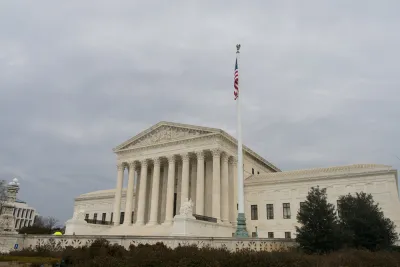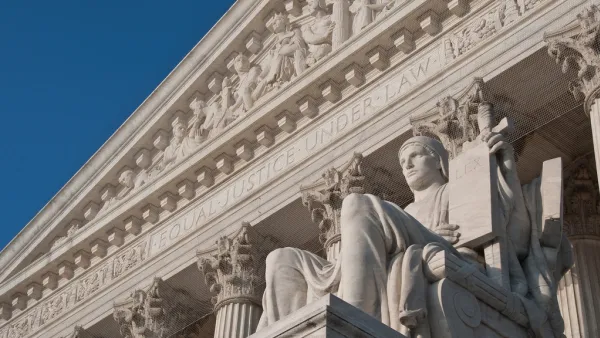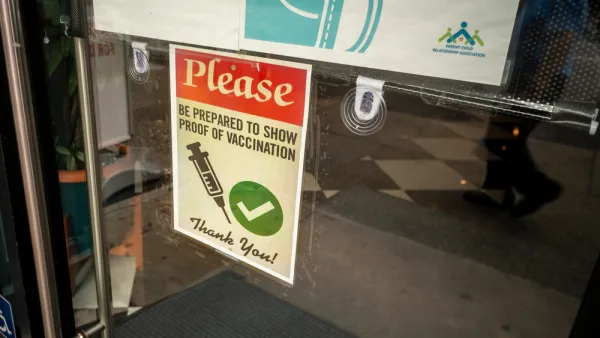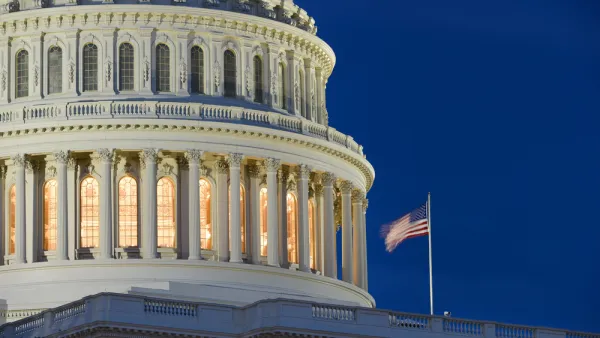The Supreme Court ruled that the Occupational Safety and Health Administration had overreached its authority to protect the health of workers in large private companies. In a separate decision, it upheld a vaccine mandate for most healthcare workers.

In a major blow to the Biden administration's Path Out of the Pandemic plan, the main element being to "vaccinate the unvaccinated," the U.S. Supreme Court on January 13 blocked an emergency temporary standard written by the Occupational Safety and Health Administration (OSHA) that required most workers in large companies (100+ employees) to be vaccinated against COVID-19 or undergo weekly coronavirus testing and wear masks to prevent viral spread.
"The question...is whether the [Occupational Safety and Health] Act plainly authorizes the Secretary [of Labor]’s mandate," referring to the large employer mandate, wrote the majority of justices in the first 10 pages of the 30-page, unsigned opinion in the case, "National Federation of Independent Business v. Department of Labor, Occupational Safety and Health Administration."
"The Act empowers the Secretary to set workplace safety standards, not broad public health measures."
"The vote... was 6 to 3, with the liberal justices in dissent," writes Adam Liptak, who covers the United States Supreme Court for The New York Times. "The ruling means that companies across the country must now decide between protecting employees, potentially losing staff members resistant to complying and running afoul of patchwork regulations."
Complicated but quick path to the Supreme Court
The final decision was noted on page 9 of the 30-page ruling [pdf]:
The applications for stays presented to JUSTICE KAVANAUGH and by him referred to the Court are granted.
The stays refer to the most recent federal appeals court ruling (Sixth Circuit in Cincinnati) that reinstated the OSHA rule on December 17. In November, at least 34 lawsuits against the OSHA rule had been consolidated and sent to the Sixth Circuit in Cincinnati after the Fifth Circuit Court of Appeals in New Orleans had stayed the rule twice.
OSHA had introduced the rule, technically referred to as an emergency temporary standard, on Nov. 4 after President Biden addressed the nation on Sept. 4 to announce his plan to combat the Delta surge. The large employer mandate was but one of four vaccination measures aimed at vaccinating two-thirds of the American workforce. The other three:
- Health care worker mandate, which the justices also decided on Jan. 13 (see below)
- Federal worker vaccine mandate
- Federal contractor and subcontractor vaccine mandate
Healthcare workers mandate
"The vote in the health care case was 5 to 4, with Chief Justice John G. Roberts Jr. and Justice Brett M. Kavanaugh joining the liberal justices to form a majority," adds Liptak. "That second mandate applies to workers at hospitals and other health care facilities that participate in the Medicare and Medicaid programs."
In both the employer and health worker cases, the justices explored whether Congress had authorized the executive branch to take sweeping actions to address the health care crisis.
In the unsigned majority opinion that occupies the first ten pages of the 23-page ruling of "Biden v. Missouri" [pdf], the five justices write, in sharp contrast to their OSHA ruling:
First, we agree with the Government that the Secretary’s rule falls within the authorities that Congress has conferred upon him...
The Secretary of Health and Human Services determined that a COVID–19 vaccine mandate will substantially reduce the likelihood that healthcare workers will contract the virus and transmit it to their patients. He accordingly concluded that a vaccine mandate is “necessary to promote and protect patient health and safety” in the face of the ongoing pandemic.
The rule thus fits neatly within the language of the statute. After all, ensuring that providers take steps to avoid transmitting a dangerous virus to their patients is consistent with the fundamental principle of the medical profession: first, do no harm.
The five justices: Breyer, Sotomayor, Kagan, and the two aforementioned conservative justices, are referring to the governing statute under which the Medicare and Medicaid programs operate. Liptak acknowledged the minority viewpoint:
In dissent, Justice Clarence Thomas, joined by Justices Samuel A. Alito Jr., Neil M. Gorsuch and Amy Coney Barrett, wrote that “scattered provisions” in the statute did not justify the mandate.
Path to Supreme Court
The final decision is noted on the first page of Biden rv. Missouri [pdf]: "Two District Courts enjoined enforcement of the rule, and the Government now asks us to stay those injunctions. Agreeing that it is entitled to such relief, we grant the applications."
Unlike the employer mandate, the Centers for Medicare & Medicaid Services (CMS) mandate never went to an appeals court. Two district courts, one in St. Louis, the other in the Western District of Louisiana, had issued preliminary injunctions on the mandate in November.
Remaining federal vaccine mandates
A three-judge panel of the Sixth U.S. Circuit Court of Appeals in Cincinnati, the same court that ruled in favor of the large employer mandate on Dec. 17, "voted 2-1[pdf] to uphold a ruling by a federal judge in Kentucky which found the Biden administration overstepped its bounds," reported Jared Serbu for the Federal News Network on Jan. 6.
As for federal employees, including those serving in the military forces, the vaccine mandate has so far withstood legal challenges.
Related in Planetizen: Biden administration vaccine mandates
-
Federal Vax-or-Test Mandate for Large Employers Reinstated, December 22, 2021
-
Biden's 'Path Out of the Pandemic' Imperiled by Multiple Court Decisions [federal contractor and subcontractors], December 5, 2021
-
Another Biden COVID Vaccine Mandate on Hold [Healthcare workers], December 1, 2021
- Update: Coronavirus Vaccination Litigation against Biden Administration [consolidation and directed to Sixth Circuit], November 28, 2021
-
Court: Federal COVID-19 'Vaccine or Test-and-Mask' Mandate 'Fatally Flawed,' November 15, 2021
-
Biden Orders Large Employers to Require Vaccination or COVID Testing, September 13, 2021
Supreme Court rulings on other vaccine mandates
-
U.S. Supreme Court Upholds New York State Vaccine Mandate, December 20, 2021
- Supreme Court Allows Indiana University's Vaccine Mandate to Remain in Place, August 16, 2021
Vaccine mandates abroad
- Compulsory Vaccination in the Birthplace of Democracy, December 6, 2021
- Austria to Mandate COVID-19 Vaccination, November 22, 2021
FULL STORY: Supreme Court Blocks Biden’s Virus Mandate for Large Employers

National Parks Layoffs Will Cause Communities to Lose Billions
Thousands of essential park workers were laid off this week, just before the busy spring break season.

Retro-silient?: America’s First “Eco-burb,” The Woodlands Turns 50
A master-planned community north of Houston offers lessons on green infrastructure and resilient design, but falls short of its founder’s lofty affordability and walkability goals.

Delivering for America Plan Will Downgrade Mail Service in at Least 49.5 Percent of Zip Codes
Republican and Democrat lawmakers criticize the plan for its disproportionate negative impact on rural communities.

Test News Post 1
This is a summary

Test News Headline 46
Test for the image on the front page.

Balancing Bombs and Butterflies: How the National Guard Protects a Rare Species
The National Guard at Fort Indiantown Gap uses GIS technology and land management strategies to balance military training with conservation efforts, ensuring the survival of the rare eastern regal fritillary butterfly.
Urban Design for Planners 1: Software Tools
This six-course series explores essential urban design concepts using open source software and equips planners with the tools they need to participate fully in the urban design process.
Planning for Universal Design
Learn the tools for implementing Universal Design in planning regulations.
EMC Planning Group, Inc.
Planetizen
Planetizen
Mpact (formerly Rail~Volution)
Great Falls Development Authority, Inc.
HUDs Office of Policy Development and Research
NYU Wagner Graduate School of Public Service





























